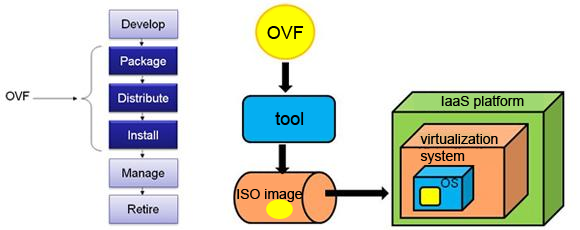The European Union recently listed data and application portability as an important tool for accelerating and expanding use of the Cloud in all sectors of the economy. (For more info on this, I’d recommend reading the EUROPA press release entitled “Unleashing the potential of Cloud Computing in Europe – What is it and what does it mean for me?")
An open format for packaging and distributing virtual applications was specified by the Distributed Management Task Force (DMTF) and recognized by ISO/IEC as the first international standard for portability between cloud IaaS platforms.
what is OVF?
Open Virtualization Format (OVF) is an open packaging and distribution format that outlines how a virtual appliance should be deployed, managed and run on a virtual machine. It specifies the deployment options, settings and resource allocation requirements for a given virtual system.

Open Virtualization Format: version 1.1
Developed by about 10 different cloud providers, OVF 1.1/DSP0243 was published in early 2011 (under the reference ISO/IEC 17203), as an international standard for cloud infrastructure portability.
The open standard helps:
- optimize the distribution of virtual applications
- improve lifecycle management for virtual machines
- offer distribution across several virtual machines
- package a portable and independent virtual machine not tied to any particular virtualization platform or hypervisor
This standard, including various open source elements, is already applied by several cloud providers in the virtualization systems they offer.
OVF 2.0 in development
The System Virtualization, Partitioning, and Clustering (SVPC) work group that specified OVF is currently developing a new version: OVF 2.0, with new features for placement, scale-out, encryption and shared disks.
The new version will also include several upgrades:
- upgraded network services to monitor and improve network QoS
- new services like load balancing, firewall, and a feature to describe complex network topology
With the European Union’s new strategy to unleash the potential of the Cloud in Europe and stimulate the productivity of businesses and administrations through cloud computing, I’m wondering if the leading cloud players will adopt this new open standard, as they are noticeably absent in standards organizations.
Jamil
with Ruby Krishnaswamy & Frédéric Dang Tran
This blog post was originally published in French here.
Photo credit: © Franck Diapo - Fotolia .com
